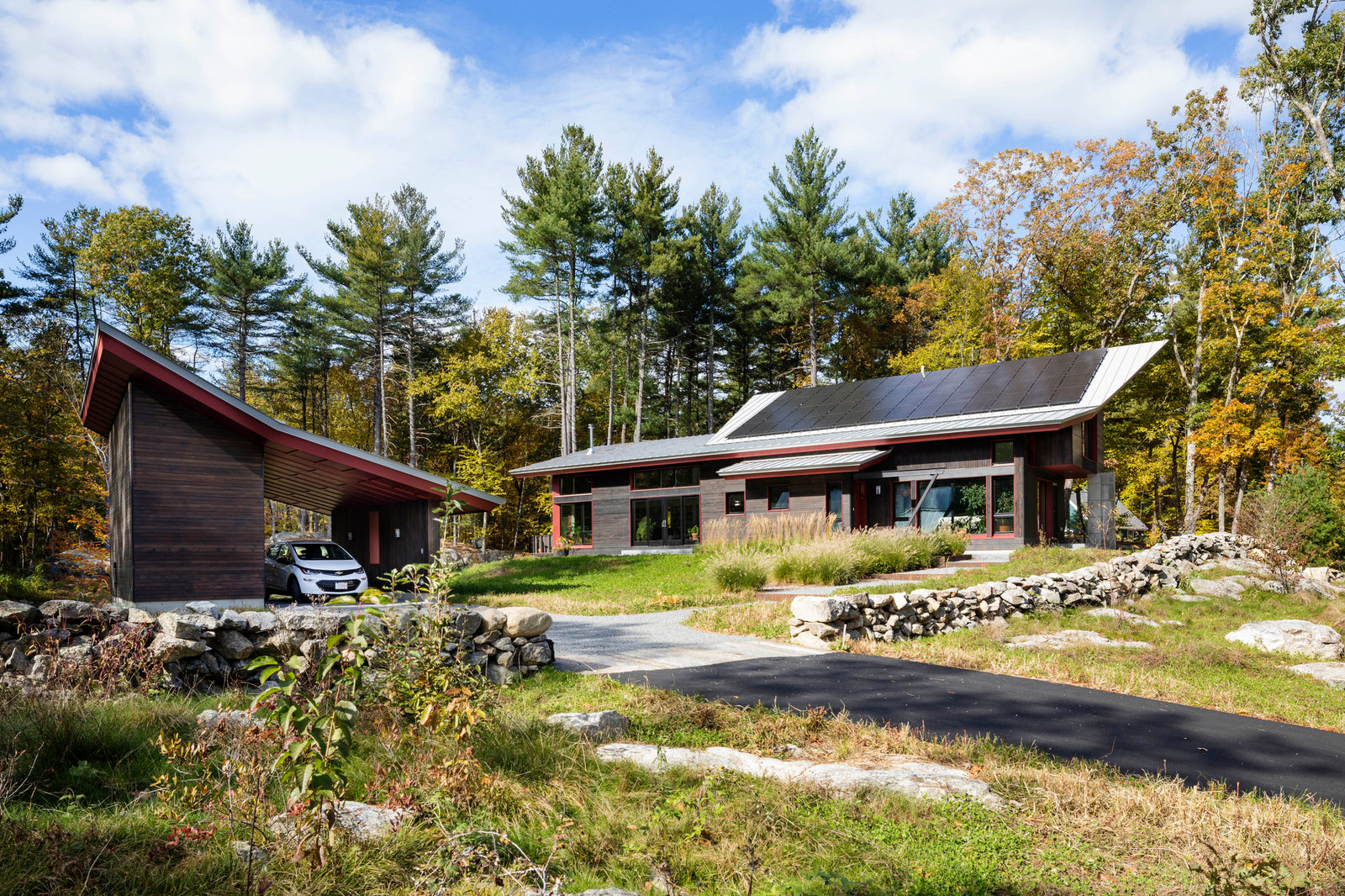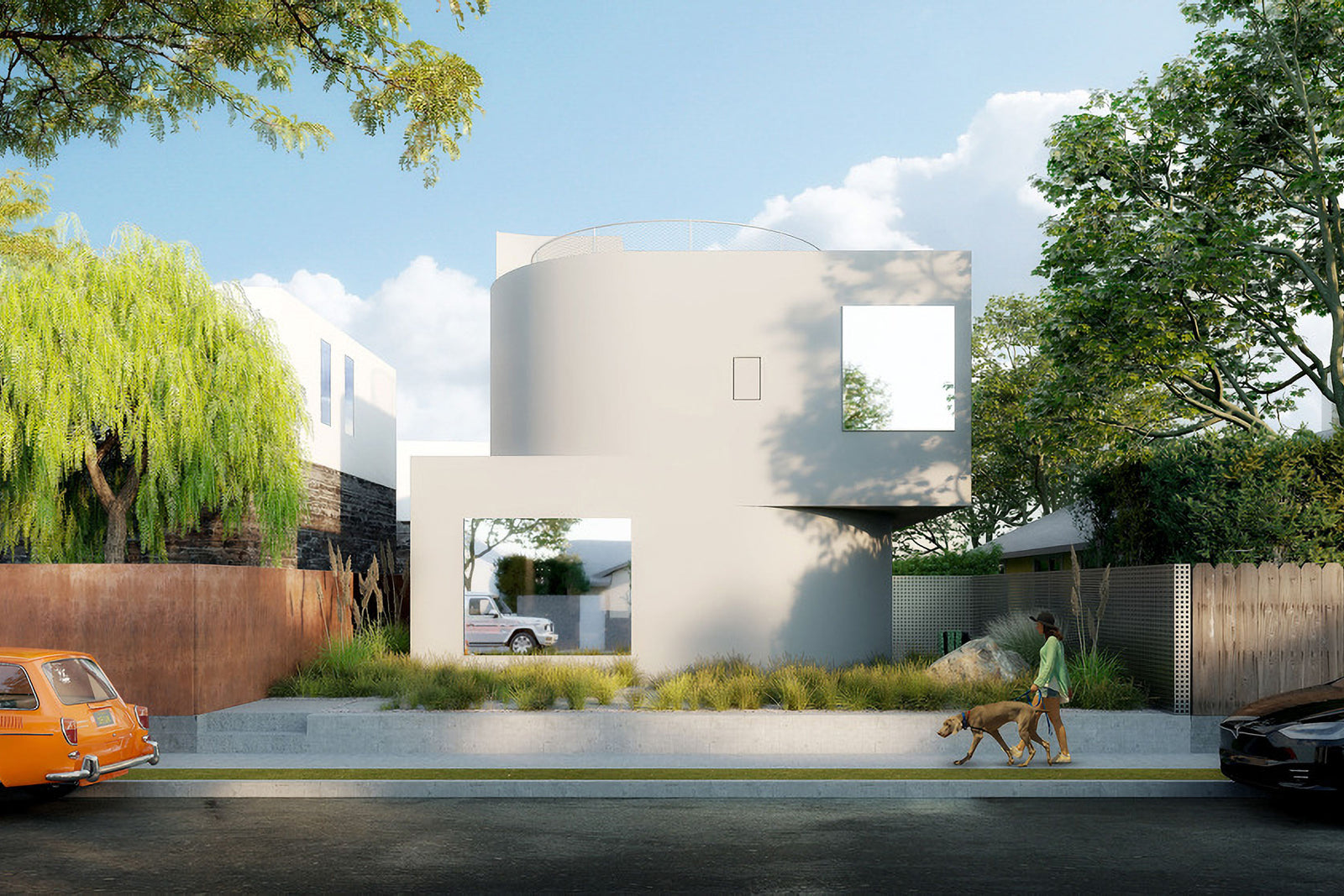Your Cart is Empty
- Decor
- Kitchen
- Tabletop & Bar
- Lifestyle
- Inspiration

A 210 m² wavy zinc-covered roof covers the front of this property excavated into a high cliff face overlooking the Mediterranean Sea in Spain's Granada province by Madrid group GilBartolomé Architects. The villa, which was built in 2015, is currently offered for rent on Airbnb as "Casa Acantilado."

This home was built on a private commission by a young couple who picked a tough site on a hill with a 42-degree slope in front of the Mediterranean Sea with amazing views. The challenge has been to blend the home with the wonderful scenery that surrounds it while also directing the habitable rooms towards the sea. It's also been about dealing with a very limited budget, a complicated site, and ambitious ambitions from both the owner and the architect.

The house's shape and metallic roof create a deliberate visual ambiguity between the natural and the artificial, between the skin of a dragon set in the earth when viewed from below and the waves of the sea when viewed from above.


The House as a Pleasurable Domestic Stage The home is built on two floors: a huge terraced living space that follows the slope of the mountain and connects to a cantilevered terrace with a swimming pool, and a second floor with rooms with views over the roof. The home is buried into the steep slope and benefits from the ground's yearly constant temperature of 19.5°C.


The habitable rooms are encased in a curving double shell of reinforced concrete that plays with the geometry of the ground while framing vistas and directing airflows that come in from the sea. This shell is supported by retaining walls 14.5 meters apart, with no further interior supports, columns, or walls. As a result, the main area of the house, structured into designated activity islands, can alternatively become a stage and auditorium for 70 people, useful for hosting huge events, entirely open to the landscape, and separated by a sliding glass facade.


The metallic roof creates a purposeful visual ambiguity between the natural and the artificial, between the skin of a dragon placed in the ground and the waves of the sea when viewed from above.


The House on the Cliff's construction is highly reliant on craftsmanship and local labor. The home was to be built during Spain's greatest financial crisis, with 26 percent unemployment in the country and close to 36 percent unemployment in the region where the house was to be erected. In this social setting, architects chose to forgo machine-made industrial building techniques and instead create an architecture built on many hours of work.


The most complex elements of the house can serve as examples of this approach: the reinforced concrete roof structure, which is based on a manually executed metal formwork, the handmade and hand put tiles that cover the roof, the ceilings made of gypsum plaster, and the interior bespoke furniture made with fiberglass and polyester resin are all designed digitally, but manufactured by hand on site, using the ancient method of "measuring from plans."


Apart from that, this move has proven to be significant in other ways. It has been a challenge for the individuals working on the site because of the intricacy and beauty of the home, as well as the skills that had to be acquired, and it has proven that everyone is willing to go the additional mile when there is an ambitious aim that points towards a worthwhile conclusion. This improves the quality of the building, but more significantly, it has been incredibly crucial for the laborers since it offered a method for them to test, learn, and eventually display their ability, perhaps opening up new job opportunities. This has also helped them reclaim the dignity they had lost in their trade, as industrial building goods are tedious to assemble, especially when a same activity must be performed indefinitely.

The home has two difficult parts that have been made economically possible owing to technological advancements. The roof was built utilizing a handmade formwork technology developed by a local engineer, Dr. Manuel Rojas, based on a patent, and a highly efficient bendable metal mesh. This approach was developed at a significantly cheaper cost than alternatives frequently used in building, such as timber or steel formworks.
The roof's finishing surface is made up of zinc scales that are hand-placed and built from raw material. When compared to the industry's prefabricated solutions, this has lowered the cost. Similarly, the furniture is created entirely by hand from computer models. These procedures that bridge the gap between the manual and the digital have resulted in a one-of-a-kind combination of attributes.


In terms of energy performance, the home is embedded in the ground, and architects have taken advantage of the ground's constant temperature of 19.5 °C throughout the year. There is a 40 cm air cavity between the interior and retaining walls that is used to manage the quantity of air at 19.5 °C that enters the home, how much goes into the pre-cooling or pre-heating of the HVAC system, and how much has to be evacuated in order to control the humidity levels.


The air cavity is sensorized and intelligently managed, with a manual overrun as necessary. Another notable feature is that the roof is a double curving concrete shell, with each shell 7 cm of concrete and 40 cm of insulation in between that functioned as formwork for the upper shell's concrete. Because it is a low-cost building approach, it provides for an excellent combination of insulation and thermal inertia. As a result of these two characteristics, the house does not require any sort of heating or cooling throughout the year.

The concrete factory that was supplied to the site is less than 10 km distant, implying a significant decrease in carbon emissions.
The construction industry and large developers who have been producing buildings of poor quality and little added value in Spain for the last two decades have created a culture of low demand and denial, instilling in society the notion that the bad architecture that surrounds us is a necessary consequence of our era. This home demonstrates that another building is conceivable and that the developer and user have the option of acquiring a superior product at a lower cost. It is a question of deception, talent, and dedication to a concept on the part of all parties.







Photographs by Jesús Granada.



The Radius House is the young firm's first residential project, which was finished in the early weeks of 2022.